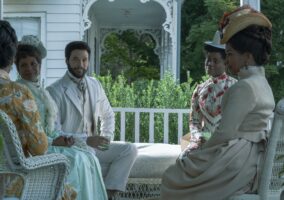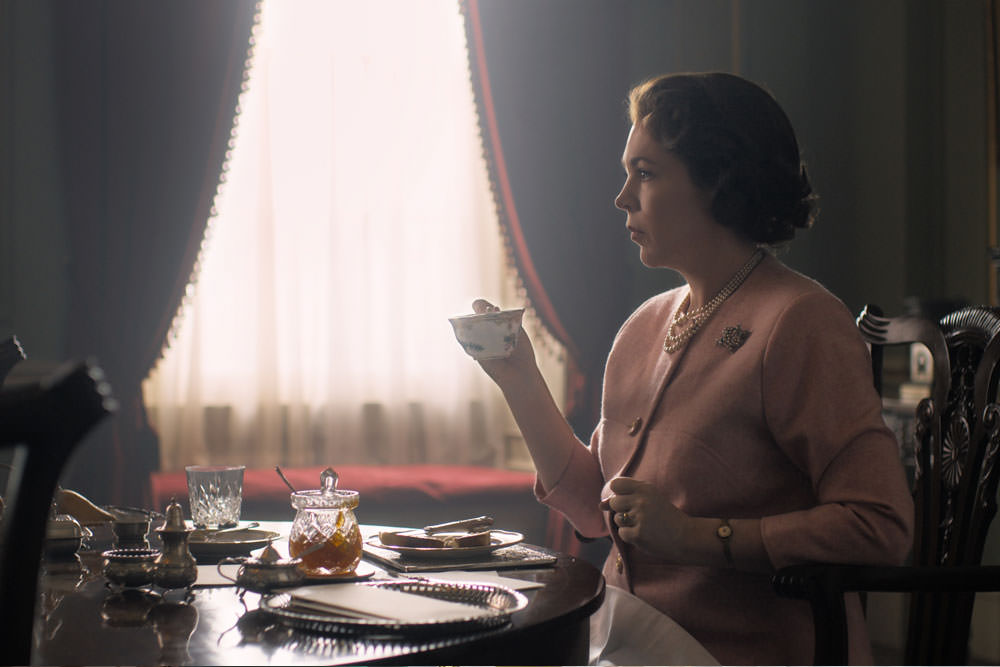
The Crown came back for its third season with a brand new cast from top to bottom (with a few cameo exceptions) and, in our opinion, produced a season as good or better than the first two, continuing all the themes and character arcs established earlier, with only a slight bump as the show got used to the newer (and older) faces in the mix.
To fans of The Crown going into its third season, no question was more pressing; no answer more anticipated, than whether or not the season’s new cast of Olivia Colman, Tobias Menzies and Helena Bonham could effectively step into the sensible shoes left behind by the old cast of Claire Foy, Matt Smith and Vanessa Kirby, and continue the series’ portrayal of Queen Elizabeth, Prince Philip and Princess Margaret without interruption. These first two episodes seemed designed to answer that question specifically. The results were entertaining and more or less sealed the deal on the new cast’s appropriateness, but they were easily the two least interesting episodes of the new season.
“Olding” in particular, suffered a bit from its decision to focus the opening minutes of the season addressing these very cast changes. While the scenes of Elizabeth looking over her new postage stamp portrait and suffering the attempts of her courtiers to describe her own aging were a wonderful showcase for Colman’s talent for micro-expressions and wordless acting (very much in the vein of Claire Foy’s portrayal), and established something of a minor theme for the season (Age is rarely kind and there’s nothing one can do about it), this extended scene seemed a bit indulgent in retrospect. Despite the title of the episode, it wasn’t really about getting older, which makes the opening scenes devoted to that idea almost feel a bit defensive, as if to say “Yes, okay. She doesn’t look the same. But she got old.”
Having said that, there’s definitely reason to explore Elizabeth’s attitude toward aging, since almost no public figure has aged so much in front of so large a worldwide audience as she has. And Colman was presumably cast to take over from Foy partially because she’s particularly good at playing awkward middle-aged women. The following scene of Elizabeth and Philip lamenting the election of Harold Wilson over tea and toast had a similar “Here they are, just as you remembered them except older” quality to it as both Colman and Menzies fired their lines and reactions at each other as if they were both doing impressions of Foy and Smith in the roles. This is not a criticism, because this scene was utterly charming and did more to seal the idea of the new cast than the opening minutes with the postage stamp conversation.
Colman does take a bit getting used to in the role. She’s naturally self-deprecating and slightly ingratiating in a way Foy never was. The haughtiness of the young Elizabeth is gone and there are times when Colman’s easy smile and expressive eyes work slightly against the image of Elizabeth being presented by the script. The opening scenes and the later dinner party scene felt a bit wobbly, but her first scene with Jason Watkins as Wilson (a performance so good we’ll be surprised if he escapes this season without an Emmy or BAFTA nomination under his belt) was pure eyebrow-arching, flared-nostril Elizabeth Regina, in all her haughty glory. “It is my duty not to have preferences.” She gets there eventually, and her take on the role pays off tremendously as the season progresses. Menzies, on the other hand, inhabits Phillip completely from his first scene. He clearly pulls quite a bit from Smith’s portrayal, but we felt like he outdid his predecessor almost from the jump.
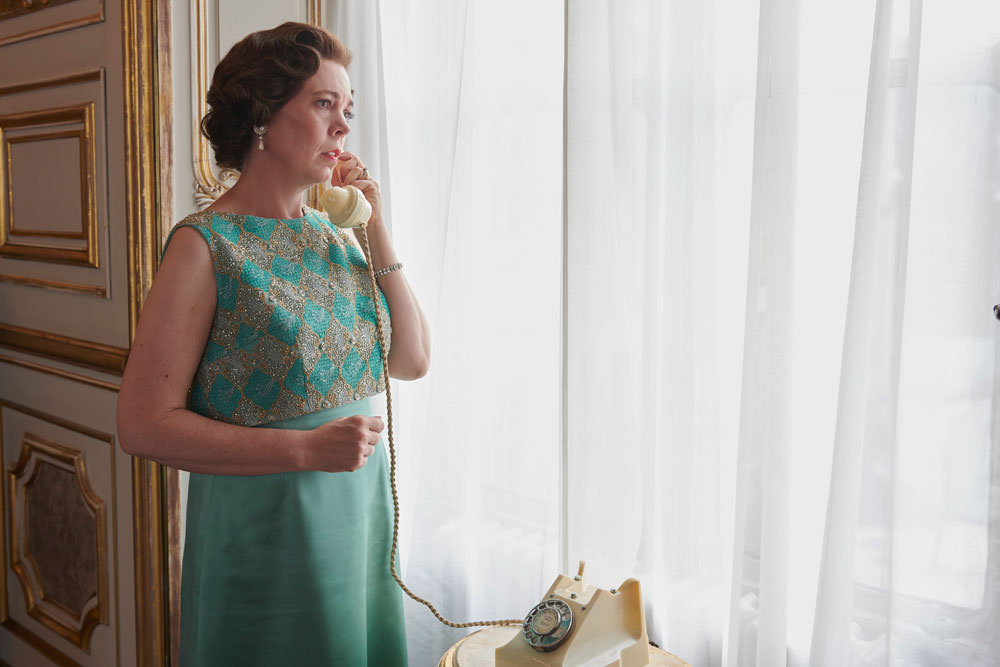
Philip and Elizabeth’s marriage is now happy and settled and without drama. Elizabeth is more comfortable in her role as queen as indicated in her first scene with her art historian Anthony Blunt, in which she’s confident, warm and clearly very much in charge. She no longer has the discomfort she used to show when dealing with courtiers and other staff members. Later, she visits Winston Churchill (John Lithgow returning for a moment seemingly designed to bridge the old cast and the new) in a touching scene where she gets to say her goodbyes to a man who ruled over her life and loomed over it even more than her father did. There’s an ease born of maturity, comfort, and experience in this scene and it sets the tone for her meeting with Wilson, who she fears to be a Russian spy and radical.
The final third of the episode, the reveal that Blunt actually is a Russian spy and that Elizabeth will have to publicly support him and help suppress that fact, turns out to be the least interesting part of the episode in a lot of ways. While it’s undoubtedly one of the more interesting facts of Elizabeth’s reign, it’s somehow given short shrift in an episode turned over to discussing Elizabeth’s aging and mourning the death of Winston Churchill. Like Colman’s performance, the episode gets there eventually, with a lovely closing scene between Elizabeth and Wilson where they find common cause and mutual respect. It’s not that we’d call “Olding” a bad episode; just one that tried to do too many things at once.
“Margaretology” was a much more focused episode – and in many ways, a much more entertaining one. You don’t cast Helena Bonham Carter as Princess Margaret, ask her to pick up the gauntlet so exquisitely laid down by Vanessa Kirby in the first two seasons, and then somehow get in her way. You do the smart thing and give her as much room as possible to have the spotlight for as long as she can. HBC is fantastic all the way through this episode (she was a bit less likable or interesting in “Olding,” which had her bellowing at Tony, drunkenly warbling, belittling servants and snapping at her mother as her only scenes). Here, she’s charming, funny, intelligent, bitter, witty, and occasionally nasty – sometimes all in the same scene. More than any of the main cast, she appears to be directly channeling her predecessor’s performance; specifically Kirby’s droll, deep-voiced, vulnerably bitchy take on Margaret.
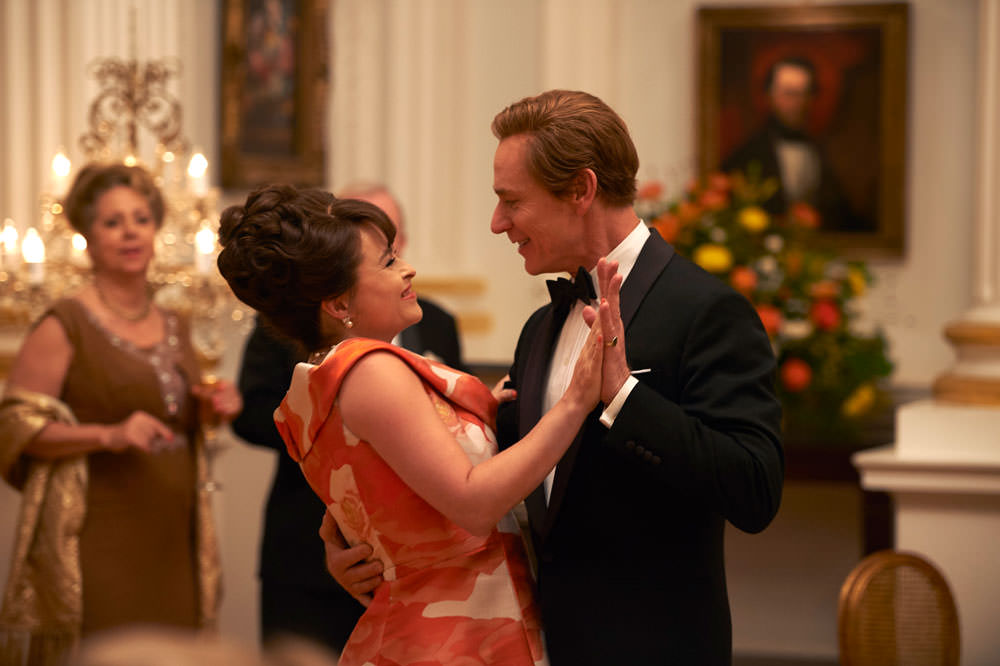
While this episode benefited greatly by being much more focused than the previous one, it still suffered just a bit from its overt attempts to “sell” the new cast member. The cameo return of Pip Torrens as Tommy Lascelles in a flashback signals, just as John Lithgow’s presence in the previous episode did, that certain themes are going to continue to play out and that the show wants you to remember that these are the same people as those glamorously complicated younger versions were. As fun as it was to watch HBC tear into Margaret with gusto, every bit of this story felt like a repeat of previous stories told about Margaret and her particular frustrations at being Number Two her whole life. Granted, you have to write the person as she was, dealing with the things she dealt with in her life. And there’s not a lot of reason to believe that Margaret grew, changed, or softened as she got older. We don’t mind the return to the same themes; just that the episode didn’t say anything about Margaret and Elizabeth that the show hasn’t said many times before. By necessity, the show sometimes has to move forward and backwards on character development.
But like we said, the point here was to stand back and let Helena Bonham Carter do what she does best. The scene between Colman and Watkins as the prime minister uncomfortably repeating the princess’s off-color limericks is honestly one of the funniest things the show’s ever done. Colman, Watkins and HBC were all brilliant in it and the editing made the jokes land with perfect precision.
Having said that, Clancy Brown’s LBJ was just a complete puzzle to us, but then again, the show badly bungled the Kennedys in their portrayal so we guess we shouldn’t be surprised. There’s a certain dim view of Americans underlining The Crown, but we can’t say we’re anything but amused by it. It strikes us less as a reflection of the show’s creators as it is a reflection of the main characters’ views.
It surprises us a little to look over this review and note how critical it is, because we really did enjoy these episodes tremendously. We don’t give letter grades, but both of these would rate as strong B+s to us. It’s just that they both felt like script remnants from previous seasons and when you put them alongside the rest of the episodes of season three, they turn out to be two of the weakest. We’re chalking it up as an adjustment period for the new cast.
Costume Watch: Unforch, the days of being able to screencap entire episodes to showcase the costumes are pretty much behind us for reasons of legality and practicality, but to be honest, this season wasn’t going to represent too much in the way of interpretation. As the story progresses through a time when worldwide mass media attention grew exponentially (moving the family from newsreel and radio coverage to full-color satellite television coverage), the show has become more interested in recreating well-known public ensembles worn by the royal family.
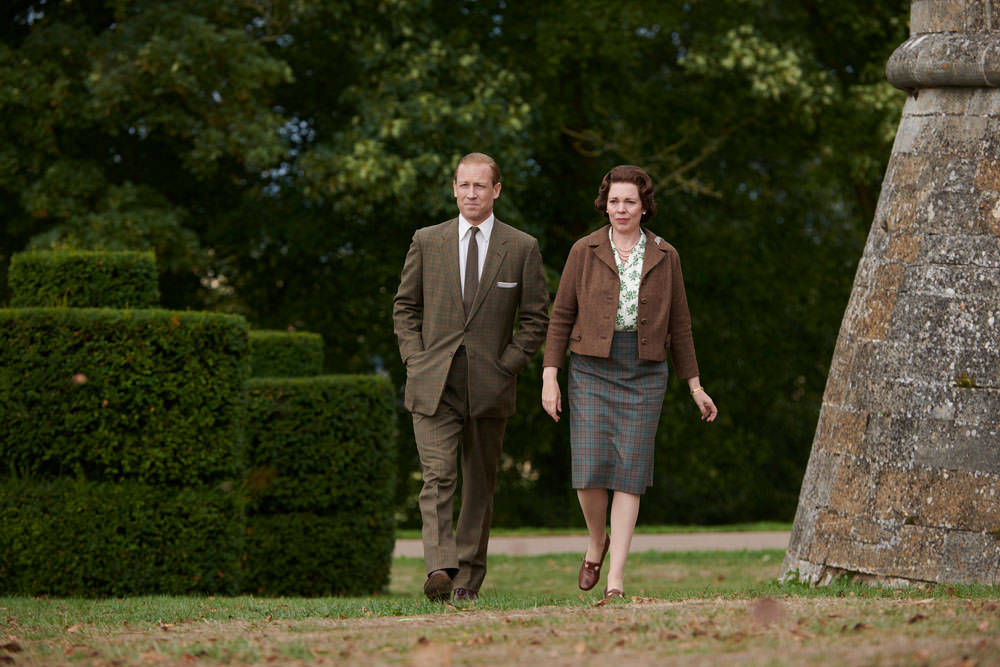
In addition, Elizabeth famously got frumpier as she got older, making coverage of her costumes in these episodes a bit less exciting. But here are a few things to note: The soft pastels of her dowdy suits in “Olding” which were lavender, pink and pale blue. Contrast this (as the show does constantly) with Margaret’s deeper hues, violent pinks and wilder prints. Margaret and Elizabeth are often dressed to complement or contrast each other. Note the wild pink floral of Margaret’s White House gown (which is not historically accurate), to the delicate pink flowers of Elizabeth’s bathrobe as she notes sadly that she would have liked to have been “dazzling.” Note the similar delicate green floral of Elizabeth’s blouse as she marches off to deny the request of Margaret (in a matching green, but an uncharacteristic-for-her plaid, showing a slight role reversal for her as she attempts to project a more queen-like image). Note the dinner party scene in “Olding,” where Elizabeth is in a mature-style gown in turquoise with olive touches while Margaret is in a much more modern and sexy gown rendered in olive with turquoise touches.
RuPaul’s Drag Race UK: Thirsty Werk Next Post:
Céline Dion Out and About in NYC in Chanel
Please review our Community Guidelines before posting a comment. Thank you!


